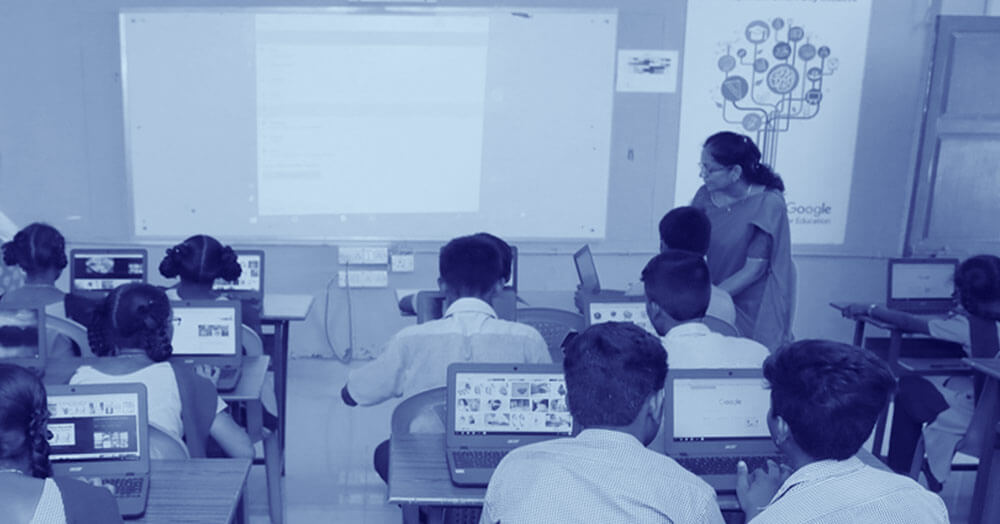Blogs
Edtech for School: 7 Benefits of EdTech In Classroom

Welcome to a new era, where the students are learning in a more advanced manner. They represent the rapidly changing world in which we live. To thrive in this world, students are blending traditional education with EdTech in the classroom. Most Edtech for school, colleges, and educational institutions have never seen such a rapid pace of development before.
Children who have access to EdTech for schools are learning much more than functional education. They are also pursuing various arts and crafts, learning to cook, playing video games blended with enriching information, and more. The educators in schools are truly the guides on the side, encouraging and assisting students to learn diverse skills as a natural part of their learning process.
Here are the seven benefits of EdTech in the classroom:
Offering an enriched learning experience with EdTech
Digital learning is a valuable resource for both students and teachers alike. By making learning a pleasant and joyful experience, digital learning imparts knowledge and information with few clicks. Today, EdTech in schools makes learning more engaging because of its immersive qualities such as the use of motion graphics and more. It also includes gamification of learning where students learn through digital games in the form of quizzes, riddles, and more to make complex learning more enjoyable. In the future, robots too will raise the level of interaction with students to a higher level.
Adapting EdTech methodologies with conventional learning methods
What makes traditional education old school is that irrespective of the differences in the student's learning skills, a standardized syllabus is offered to them. This results in most students lagging behind because of their lack of interest in studies. EdTech companies in India address this issue by incorporating innovative learning techniques to make school subjects interesting for even the most disinterested students.
Making learning resources easily accessible with EdTech
With easy access to information on digital technologies, students seek their assistance to find answers to everyday concerns. They are well-versed in search engines, online videos, e-book-based educational content, online tuition, various student forums, and other resources.
Of special mention is that today’s schools need to keep their students’ aptitudes in mind. By deploying EdTech in the classroom like remote access to students, live streaming of classes, the use of animation in explaining difficult subjects, and using games they need to engage students continuously in the learning process.
EdTech for school ensures an immersive learning experience
EdTech opens up a world of immersive learning techniques through audio, video, and animation. Because of the interactive nature of these digital technologies developed by EdTech companies in India, students become engaged on a deeper level.
Imagine a classroom presentation of high-definition (HD) YouTube videos about our solar system and the myriad galaxies around us. They could give students the impression that they are traveling around our solar system and exploring the galaxies too. They can learn more about the surfaces of various planets than they could from the photos in textbooks. Modern learning tools like digital boards, projectors, and 3D simulators also add to the enjoyable learning experiences.
EdTech companies in India encourage collective learning experiences
The older generation used to engage in combined studies and discuss their syllabus and exam topics over the landline phone. The current generation is now one step ahead. They are connecting with each other over WhatsApp. Foreign tutors teaching guitar via video calls, local tutors specializing in various subjects taking tuitions on Zoom, multiple students working on online projects as a group – these are the possibilities of today. Such collaborations among students and also between students and teachers facilitate ease of learning and make education accessible to all.
Enabling students to emerge as tomorrow’s capable workforce
Today, more and more students are questioning textbook-based learning in their schools and colleges. They are judging them based on their usefulness in their future workplace. They realize, that learning with the aid of modern technology ensures that they become up-to-date with the technologies utilized in their future workplace. Learning how to use these technologies post one’s formal education would be an added burden on their minds. It would be far better if educational institutions venture forth to familiarise students with the latest in EdTech in schools such as multi-utility projectors, websites containing video courses and PDFs, video calling apps, electronic whiteboards, emails, mobiles, and more.
Boosting the role of EdTech for school classrooms
The revolution in education has been unleashed on a grand scale. As more parents learn about the benefits of modern technology in education, they desire more for their children. Educational institutions with a modern outlook too are obliging to their demands by incorporating EdTech in the schools. They are also planning out content, and teaching strategies, and developing more exciting engagement techniques to make the students learn more.
Shortly, the gap between the traditional form of teaching and the modern form of teaching will become narrower. We will then see the fruitful results of a highly digitized world around us. Schoolnet is one of the pioneers among the EdTech companies in India aiming to make an impact. In schools, colleges, and various educational institutions, in many parts of India, it has introduced new teaching methodologies that leverage technology.
By curating multimedia content, equipping teachers with training and tools to customize assessments, and allowing students to map out their learning progress, Schoolnet makes learning engaging and accessible to all. Parents can rely on analytics to track progress, enabling intervention rather than interference in children’s learning. As Schoolnet’s presence grows far and wide, it aims to bring technology-enabled education to the lives of 130 million learners by 2031.





